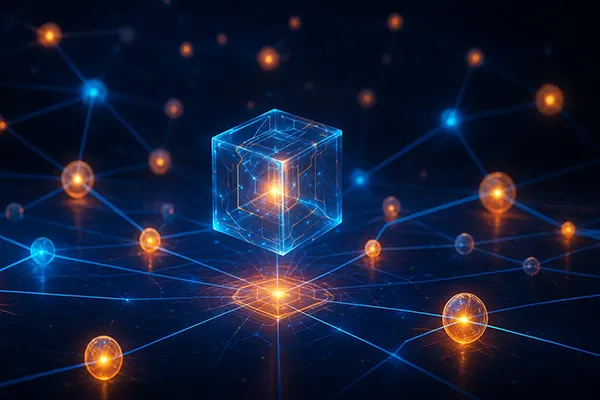Quantum Internet: How It Will Change Data Transmission

The quantum internet is an emerging technology that promises to transform the way data is transmitted and stored. Unlike traditional networks, the quantum internet utilizes the principles of quantum mechanics, enabling ultra-secure communication and unprecedented data transmission speeds.
Fundamentals of the Quantum Internet
The core principle of the quantum internet is based on the phenomenon of quantum entanglement. When two particles are entangled, changes in the state of one particle instantly affect the other, regardless of distance. This property forms the basis for transmitting data instantaneously over vast distances.
In traditional networks, data is transmitted through binary bits (0s and 1s). In contrast, the quantum internet uses qubits, which can represent 0, 1, or both simultaneously due to superposition. This dual state allows for more efficient and faster data processing.
One of the primary advantages of the quantum internet is its resistance to hacking. Any attempt to intercept or measure qubits causes them to change state, making eavesdropping virtually impossible. This feature is expected to revolutionize cybersecurity.
Future Implementation Scenarios
The quantum internet is still in the experimental phase, but several implementation scenarios are already being developed. These scenarios range from secure local networks to globally interconnected infrastructures utilizing quantum computing power.
One of the main challenges in implementing the quantum internet is the required physical infrastructure. Unlike classical networks, the quantum internet needs special fiber optics and quantum devices capable of handling entanglement and quantum teleportation. Major research centers, such as MIT and Google Quantum AI, are investing in developing these components to make the quantum internet a reality.
Another promising scenario is the creation of hybrid quantum networks, where classical and quantum connections coexist. These networks would allow a gradual transition towards quantum adoption without replacing the existing infrastructure entirely. This approach would ease the integration of new quantum technologies with current transmission systems.
Comparison with Traditional Networks
The quantum internet fundamentally differs from traditional networks. While classical networks transmit bits through copper cables or fiber optics, the quantum internet employs qubits, leveraging superposition to exist in multiple states simultaneously.
Another key difference lies in security. Traditional networks are vulnerable to cyber-attacks that can intercept or manipulate data in transit. In contrast, the quantum internet offers near-absolute security due to the no-cloning theorem, making it impossible to copy or intercept qubits without altering their quantum state.
Additionally, data transmission efficiency is significantly higher in the quantum internet. Current networks face speed and latency limitations due to routing and encryption protocols. The quantum internet, however, offers almost instantaneous transmission through quantum entanglement, where a change in one qubit’s state instantly affects the other, regardless of distance.
Challenges of Transitioning to the Quantum Internet
Despite its revolutionary potential, the quantum internet faces numerous technical and practical challenges. One major issue is quantum coherence, as qubits are highly sensitive to environmental interference, leading to information loss.
Scalability is another critical hurdle. Although small-scale quantum networks exist, expanding this technology globally requires overcoming long-distance transmission challenges and developing efficient quantum repeaters.
Moreover, interoperability with classical infrastructures poses a significant challenge. Developing hybrid protocols to enable communication between classical and quantum systems is essential for ensuring a smooth and secure transition.

Impact on Data Transmission Security
The quantum internet promises a significant advancement in data transmission security. Currently, most digital communications rely on encryption algorithms that could be compromised by advanced quantum computing.
Using quantum cryptography protocols, such as Quantum Key Distribution (QKD), ensures that any interception attempt is detected immediately. This is because direct observation of qubits results in the collapse of their quantum state, making espionage evident.
The impact on critical sectors such as government, finance, and military communications will be substantial. Implementing quantum networks in these areas will guarantee highly sensitive information transmission without the risk of conventional or quantum cyber-attacks.
Prospects for Mass Adoption
Despite the promises of the quantum internet, mass adoption depends on various factors, including implementation costs and the development of compatible infrastructure. Currently, the costs associated with quantum equipment remain high, limiting accessibility.
However, increasing investments from governments and tech corporations are driving commercialization. Initial quantum networks are expected to be established in high-security sectors within the next decade before expanding to broader commercial use.
Furthermore, training experts in quantum technology is crucial to ensure a smooth transition. Universities and research centers are beginning to offer specialized programs to prepare the next generation of quantum engineers.




